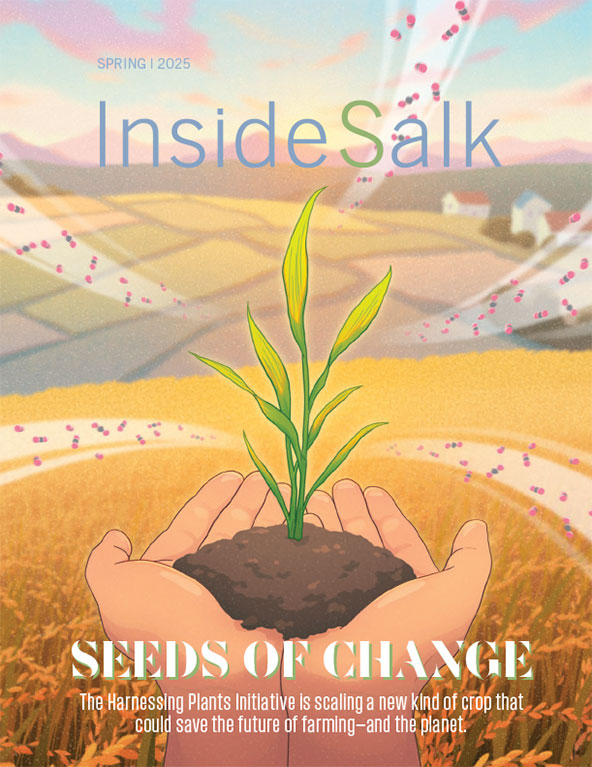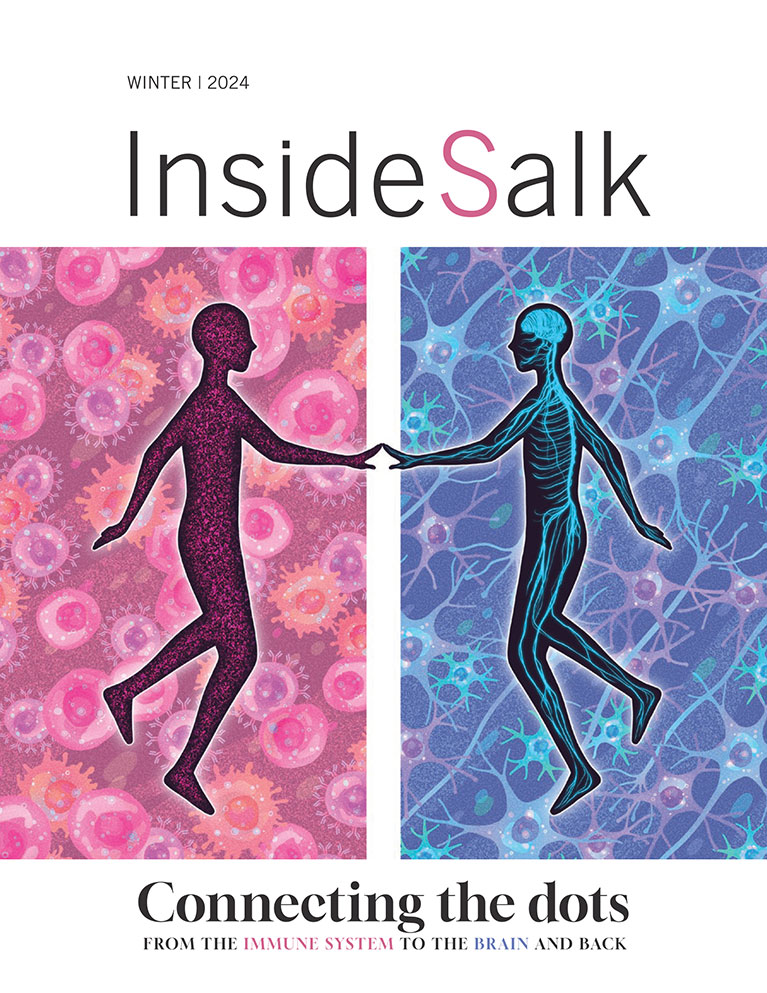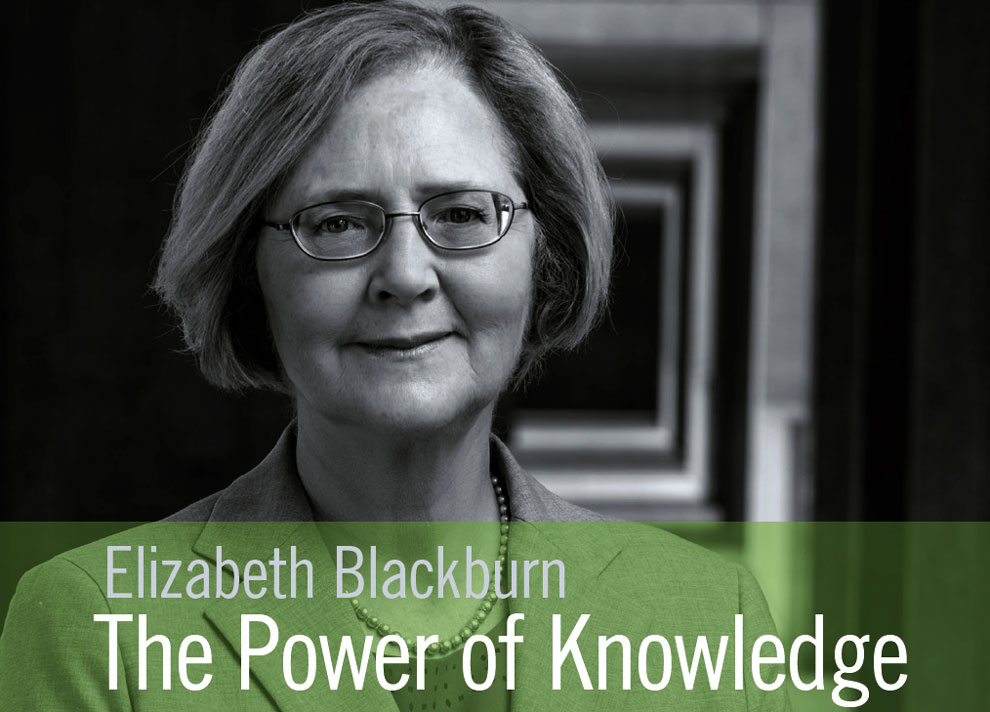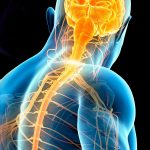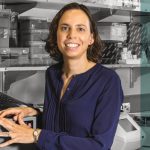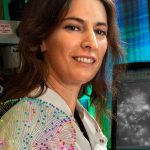My favorite scientific heroine, the physicist Marie Curie who was twice a Nobel Prize winner, said something that I have always remembered: “Nothing in life is to be feared, it is only to be understood.”
That observation, with its inherent fearlessness, speaks to me at my core as a scientist. It also can be a North Star for our daily lives. Yes, things to fear—indeed, sometimes, outright danger—are all around us, in the risk of injury and loss of material goods and threat of disease. But we possess immense capabilities for surviving these adversities. We have our intellect and our accumulated societal knowledge and our science. So we learn from our setbacks; we adopt new strategies and then go forward.
I think about fearlessness and the triumph of knowledge as I look out across the beautifully refurbished buildings on our Salk campus. The teak window wall assemblies, installed in accordance with Louis Kahn’s breathtaking design, have existed for some 50 years in their own dangerous environment of damp marine air, harsh sunlight, termites and an invasive fungus from a recently identified culprit. Some time ago, they began exhibiting many familiar symptoms of disease and aging: failing structural integrity, exterior discoloration and increased vulnerability to pathogens. Thanks to a determined scientific investigation and intervention, however, these panels have been rejuvenated. Their lives have been extended.
We are very grateful to the Getty Conservation Institute, which in partnership with the Salk Institute, convened a team of experts to examine all 203 teak assemblies and charged them with arriving at a diagnosis for the deterioration and then developing a plan for restoration. This cross-disciplinary team included historians, scientists, architects, engineers and philanthropists—a strategy that mirrors some of Salk’s recent successes in elucidating complicated biological systems. For their part, scientists turned to DNA analysis to ascertain that the fungal biofilm blackening the wood was caused by spores from the campus’s grove of eucalyptus trees. The Getty’s conservation team has since implemented protection against these spores as well as the other damaging elements of the marine environment.
And that leads to my point: we can’t eliminate all biological dangers in our world—and we wouldn’t want to. Pathogens, despite their link with disease, play an important role on Earth. Within the plant community, for example, it’s been proven that pathogens help maintain diversity. And diversity aids long-term species survival. In humans, our immune systems have been challenged over generations to develop different strategies to identify and target the wide variety of pathogens in our daily environment. Therefore, we are better equipped to face future, and continually evolving, dangers.
It all comes back to scientific knowledge. The more we learn about these fungi, bacteria, viruses and cancers, the more readily we can intercept and manage them, and the more successfully we can mitigate the damage they do. Managing pathogens, rather than trying to outright exterminate them, is somewhat of a new paradigm for addressing disease and one that several Salk scientists, always on the leading edge of scientific thought, are advancing. We are moving toward a day when cancers, along with many viral and bacterial diseases, will be identified early and then contained and managed, preventing them from inflicting serious damage on our bodies.
Our environment will always include dangers, seen and unseen. Salk’s teak window wall assemblies, refurbished now to a beautiful golden glow, are still surrounded by eucalyptus trees and their infectious spores. But we’ve provided them with additional defenses. And armed with new scientific knowledge, we can closely monitor them for future signs of disease, before it takes hold and demands emergency remediation.
Let me conclude with what an architect friend of the Institute, Hugh Davies, pointed out to me: when you see someone walk across the Salk courtyard, silhouetted against the sea and sky, they appear larger than life. I think this is more than an optical illusion; being a part of the Salk Institute makes people larger than life. It inspires them to be so. So, as both a scientist and President of Salk, I will heed Marie Curie’s words and know that what we may fear can always be understood.
![]()
Elizabeth Blackburn
President, Salk Institute
Irwin M. Jacobs Presidential Chair
